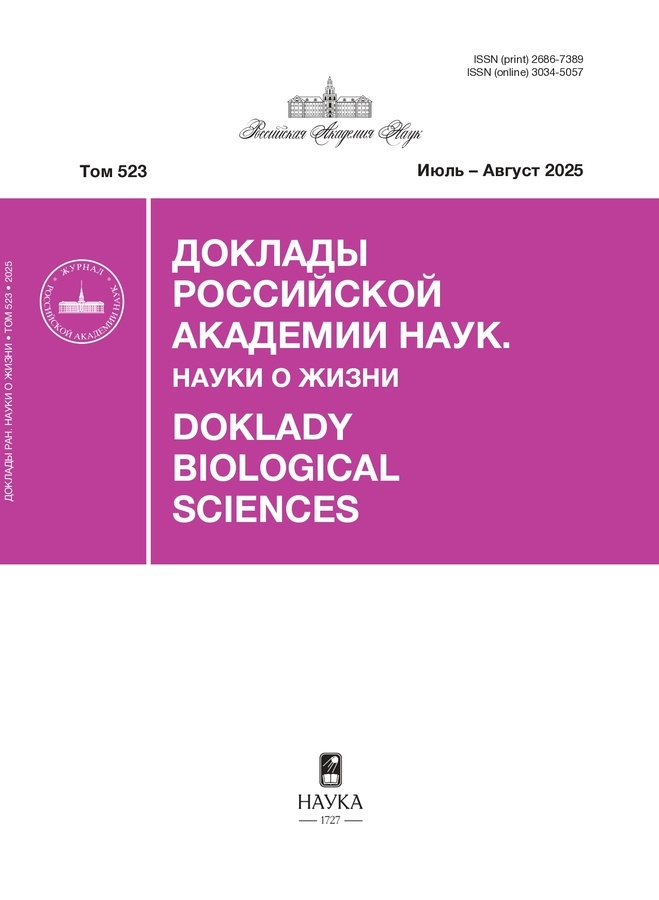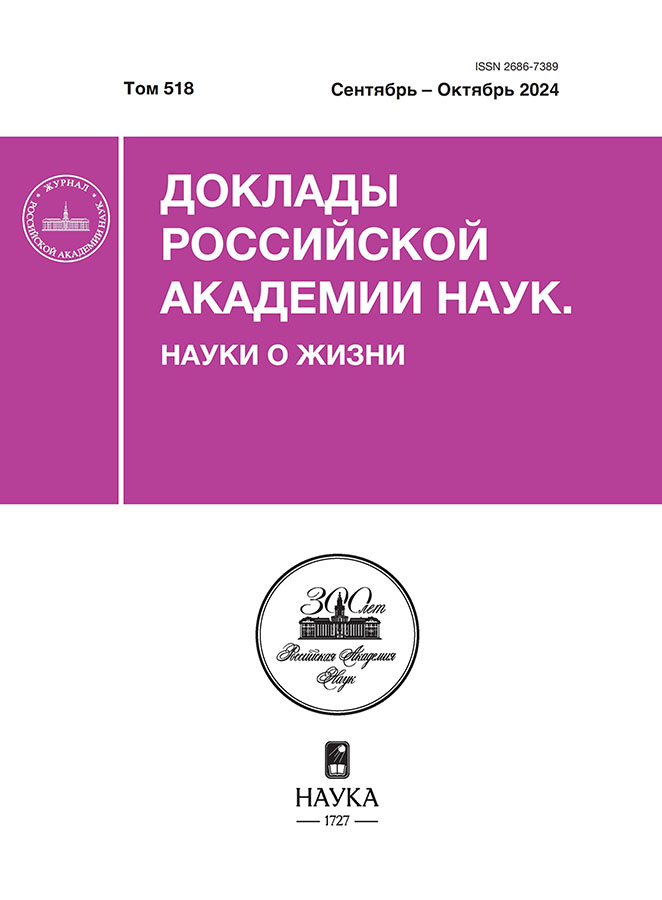Циркадная регуляция экспрессии генов метаболизма каротиноидов (PSY2, LCYE, CRTRB1, NCED1) в листьях томата Solanum lycopersicum L.
- Авторы: Филюшин М.А.1, Щенникова А.В.1, Кочиева Е.З.1
-
Учреждения:
- Федеральное государственное учреждение «Федеральный исследовательский центр “Фундаментальные основы биотехнологии” Российской академии наук»
- Выпуск: Том 518, № 1 (2024)
- Страницы: 108-112
- Раздел: Статьи
- URL: https://kld-journal.fedlab.ru/2686-7389/article/view/651408
- DOI: https://doi.org/10.31857/S2686738924050191
- ID: 651408
Цитировать
Полный текст
Аннотация
Охарактеризована циркадная динамика экспрессии ключевых генов метаболизма каротиноидов (PSY2, LCYE, CrtRB1, NCED1) в фотосинтезирующей ткани растений томата Solanum lycopersicum L. (сорт Корнеевский). Осуществлен in silico анализ профиля экспрессии генов и обнаружен высокий уровень их транскриптов в листовой ткани растения томата. Проведен анализ (ПЦР-РВ) профиля экспрессии генов в шести временных точках в течение суток и показано, что наибольший уровень транскриптов PSY2, LCYE и NCED1 приходится на вторую половину световой фазы, тогда как CrtRB1 – на окончание темновой фазы. Определено содержание и состав каротиноидов в листовой ткани в середине дневного периода и показано, что соединений ɛ/β-ветви биосинтеза каротиноидов накапливается в 1.5 раза больше, чем соединений β/β-ветви.
Ключевые слова
Полный текст
Об авторах
М. А. Филюшин
Федеральное государственное учреждение «Федеральный исследовательский центр “Фундаментальные основы биотехнологии” Российской академии наук»
Автор, ответственный за переписку.
Email: michel7753@mail.ru
Россия, Москва
А. В. Щенникова
Федеральное государственное учреждение «Федеральный исследовательский центр “Фундаментальные основы биотехнологии” Российской академии наук»
Email: michel7753@mail.ru
Россия, Москва
Е. З. Кочиева
Федеральное государственное учреждение «Федеральный исследовательский центр “Фундаментальные основы биотехнологии” Российской академии наук»
Email: michel7753@mail.ru
Россия, Москва
Список литературы
- Stra A., Almarwaey L.O., Alagoz Y., et al. // Front. Plant Sci. 2023. V. 13. 1072061.
- Stauder R., Welsch R., Camagna M., et al. // Front. Plant Sci. 2018. V. 9. 255.
- Li F., Vallabhaneni R., Yu J., Rocheford T., et al. // Plant Physiol. 2008. V. 147(3). P. 1334–1346.
- Ezquerro M., Burbano-Erazo E., Rodriguez-Concepcion M. // Plant Physiol. 2023. V. 193(3). P. 2021–2036.
- LaPorte M.F., Vachev M., Fenn M., et al. // G3 (Bethesda). 2022. V. 12(3). jkac006.
- Hu L., Feng S., Liang G., et al. // AMB Express. 2021. V. 11(1). 83.
- López-Ráez J.A., Kohlen W., Charnikhova T., et al. // New Phytol. 2010. V. 187. P. 343–354.
- Zhang M., Yuan B., Leng P. // J. Exp. Bot. 2009. V.60. P. 1579–1588.
- Kai W., Fu Y., Wang J., Liang B., et al. // Sci Rep. 2019. V. 9. 16943.
- Yang R., Yang T., Zhang H., et al. // Plant Physiol. Biochem. 2014. V. 77. P. 23–34.
- Yari Kamrani Y., Shomali A., Aliniaeifard S., et al. // Cells. 2022. V. 11(7). 1154.
- Li F., Vallabhaneni R., Yu J., Rocheford T., et al. // Plant Physiol. 2008. V. 147. P. 1334–1346.
- Sun T.H., Liu C.Q., Hui Y.Y., et al. // J. Integr. Plant Biol. 2010. V. 52. P. 868–878.
- Baek D., Kim W.Y., Cha J.Y., et al. // Plant Physiol. 2020. V. 184(1). P. 443–458.
- Efremov G.I., Ashikhmin A.A., Shchennikova A.V., et al. // Russian Journal of Plant Physiology. 2023. V. 70(2). P. 17
Дополнительные файлы













